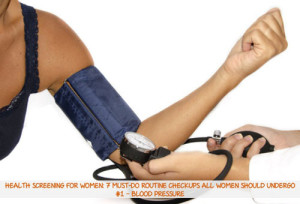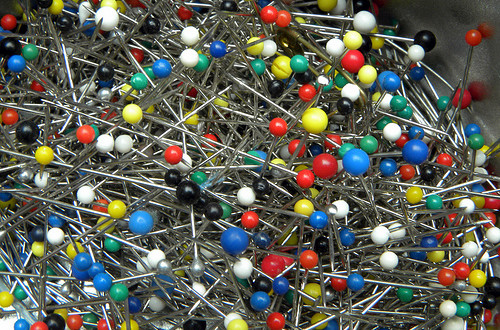by Michelle Sutton-Kerchner
Occasionally, everyone experiences “pins and needles” where an arm or foot “fall asleep.” Often the result of poor positioning, the sensation occurs when blood to the area is interrupted. The discomfort subsides after vigorous rubbing or shaking of the extremity to restore blood circulation. These isolated incidents are not typically a cause for concern. However, poor circulation might be.
Circulation Information
Blood circulation transports nutrients throughout the body, helps manage waste production, improves muscle recovery after a workout, and accelerates healing. Healthy circulation maximizes these functions by improving blood flow via vessels, arteries, veins, and capillaries. When circulation is compromised by disease or other factors, muscles easily atrophy and numbness and tingling frequently occur. Infections develop more easily. Poor circulation increases risk for serious health threats, including stroke, hypertension, and kidney failure. In extreme cases, death can result.
Help Your Heart
Vigorous blood flow eases the heart’s function. The simple analogy of a sink with a clogged drain demonstrates the additional effort required to force blood through the body when circulation is poor. Clear passageways with oxygenated blood pulse through the body with less exertion. Hence, the term “runner’s pulse.” Note the optimal standard isn’t called the “couch-potato’s pulse.” Although that sounds relaxing, appearances can be misleading. When done continuously as a lifestyle, your insides must compensate for the lounging around by working harder.

Over time, fitness and proper training strengthens the heart. A strong heart means better blood flow with less work. Exercise can improve blood flow and heart function, both of which result in an optimum circulatory system.
Signs of Poor Circulation
There are many symptoms associated with poor circulation. The most common include:
- Coldness in extremities, regardless of environment
- Numbness, often in extremities, not related to a pinched nerve
- Fatigue
- Swelling and water retention, especially in feet
- Frequent cramps and tingling (pins and needles), without obvious reason (You didn’t just sit cross-legged through a marathon viewing of last season’s Arrested Development.)
- Knotted and varicose veins may be indicative
- Headaches, including migraines
Possible Causes
Poor diet is a primary cause. Foods high in fat and sugar negatively affect cholesterol, triglycerides, and glucose levels. They also contribute to weight gain. These factors individually impact the circulatory system, and further hinder when in combination.
Cigarette smoking is strongly linked to poor circulation. Smoking causes blood vessels to constrict, which limits blood flow. It also increases the threat of developing high cholesterol and coronary artery disease. These fatty deposits, in blood vessels already narrowed, further impede blood flow. The chance of life-threating events like heart attack and stroke increases.
Careers that limit physical activity affect circulation by their simple limitation of movement. Extensive time at a desk, computer terminal, or in a car should be balanced out with brief but frequent breaks to stretch and move. An overall sedentary lifestyle contributes to poor circulation.
Get the Blood Flowing
Increase physical activity, and introduce exercise. These two are not interchangeable. A formal exercise program four times a week for an hour cannot counteract inactivity the rest of the week. It also will not negate the bag of chips and pizza dinners. Continuous movement during your days, combined with an official fitness regimen at regular intervals, maintains healthy blood flow.
Cardio workouts get the blood pumping throughout the entire body. If you are a beginner, especially if you have heart health issues, start with a gentle walking program to build momentum. Adjust the treadmill or other exercise machines for minimal exertion. Ask a personal trainer for assistance, and share any concerns. Inform him/her of your goal to improve circulation. They know how to get the blood pumping on the Exercise Floor and beyond.

To increase physical activity, you do not have to jog in place in front of your computer on the hour. Get cyclical! Circle your wrists 20 times clockwise and counterclockwise to get blood flowing to your hands. Do the same with ankles to help blood blow to your feet. This can be done while sitting or standing.
Stretch arms over your head with fingers reaching toward the ceiling. Sway hips for increased circulation to the abs. Form a bridge while lying face-up on the floor. Each time you lift your pelvis off the floor, imagine your entire core gaining fresh nourishment. Speak with a Pilates instructor for more mat positions to increase circulation to every area of the body.
Neck stretches increase circulation to the arms. Gently turn head right and left as far as your range-of-motion allows. Do the same up and down. Repeat several times, kneading the area with your finger tips to enhance movement. Avoid turning the head in continuous circles. Simultaneous movement through multiple extremes can cause strains. Try these before bed to help prevent a stiff neck, and stop shoulders and arms from falling asleep.
A good stretching program based on yoga can assist in overall blood flow. Movements combine with visualization to enhance the circulatory system from every angle.
Get a Boost with Good Nutrition
 Foods that benefit heart health are also the best choices to aid circulation. Proper diet allows a steady, strong heartbeat to pump blood through clear arteries. Healthy blood cholesterol, triglyceride levels, and blood pressure assist in good circulation. To improve circulation, follow a heart-healthy diet of low-fat, low-sodium foods. Focus on choices high in potassium, calcium, magnesium, and vitamin D. Monitor cholesterol intake to keep arteries from thickening and clogging.
Foods that benefit heart health are also the best choices to aid circulation. Proper diet allows a steady, strong heartbeat to pump blood through clear arteries. Healthy blood cholesterol, triglyceride levels, and blood pressure assist in good circulation. To improve circulation, follow a heart-healthy diet of low-fat, low-sodium foods. Focus on choices high in potassium, calcium, magnesium, and vitamin D. Monitor cholesterol intake to keep arteries from thickening and clogging.
Oatmeal has the largest ratio of soluble fiber of all grain foods, which lowers bad cholesterol. It also nourishes the heart muscle. Oat and wheat bran have similar properties. White beans are an excellent source of protein for those striving to limit meat consumption. They are recommended to help improve blood cholesterol and blood-sodium balance. Their high potassium level offsets sodium’s impact on your blood pressure.
Drink and cook with fat-free milk for all the nutritional gains without the damaging fat content. Increase fiber through fresh fruit and vegetables. Keep your system flushed with plenty of fresh water throughout the day.
Herbal supplements to help increase circulation also produce positive results. Cayenne, garlic, ginkgo biloba, and ginger are consider the super four for circulation. Omega-3 fatty acids found in foods like salmon, or through supplements, also help.
When Further Attention Is Needed
Lifestyle changes, including increased physical activity and improved diet, usually help poor circulation and alleviate its associated symptoms. If they do not help, your physician should investigate other causes, such as diabetes, arteriosclerosis, and peripheral artery disease.
Otherwise, use this inspiration to get pumped! A body in motion stays in motion.
Sources
“What Are the Symptoms and the Causes of Poor Circulation?” at www.poorcirculation.org.
Image Credits
Pins and needles (introductory photo): www.flickr.com/photos/nathanmac87/4368880944/
Blood pressure: http://www.flickr.com/photos/88092208@N06/9391732508/
Computer sitting: www.flickr.com/photos/generated/1952501972/
Fresh produce: http://www.flickr.com/photos/kanenas-net/6802531316/
 Fitness & Wellness News Your Source for Fitness News, Wellness News, Health News, and Nutrition News!
Fitness & Wellness News Your Source for Fitness News, Wellness News, Health News, and Nutrition News!




